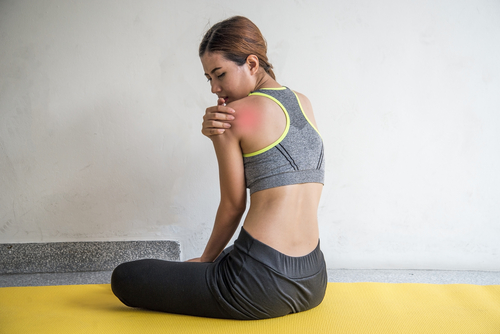Adapting Your Workout Routine After a Rotator Cuff Injury
January 12, 2024 3:35 pm Leave your thoughts
Sustaining a rotator cuff injury can be a frustrating setback for anyone who enjoys exercising and staying active. The rotator cuff, located in the shoulder, plays a crucial role in shoulder movement and stability. Injuries to this area can significantly impact your ability to perform certain exercises and may require adjustments to your workout routine. In this blog post, we will discuss how to adapt your workout routine after a rotator cuff injury to help you maintain fitness and recover safely.
Understanding the Injury and Its Limitations
Before making any changes to your workout routine, it is important to understand the nature of your rotator cuff injury and its limitations. Seek medical advice and consult with a physical therapist or sports medicine professional who can assess your condition and provide an appropriate diagnosis. They will be able to determine the severity of your injury, identify any specific movements or exercises to avoid or modify, and advise you on a suitable rehabilitation program.
Focus on Rehabilitation Exercises
Rehabilitation exercises will be an essential part of your recovery process. Your physical therapist will likely prescribe specific exercises to strengthen and rehabilitate the rotator cuff muscles. These exercises typically involve gentle and controlled movements that gradually increase in intensity over time. Balancing rest and rehabilitation is crucial to prevent further damage and aid in the healing process.
Modify Upper Body Exercises
Depending on the severity of your rotator cuff injury, you may need to modify or avoid certain upper body exercises that put excessive strain on the shoulder joint. Movements that involve lifting weights overhead or horizontally, such as shoulder presses, bench presses, or pull-ups, may need to be modified to reduce stress on the affected shoulder. Instead, focus on exercises that target different muscle groups while minimizing shoulder joint involvement. For example, squats, lunges, and core exercises can still provide a challenging workout without compromising your shoulder’s recovery.
Strengthening Supporting Muscles
During your recovery, it is important to focus on strengthening the supporting muscles around the shoulder joint. Strengthening the muscles in the chest, back, and upper arms can help reduce stress on the rotator cuff muscles and promote stability. Incorporate exercises such as rows, lat pull-downs, bicep curls, and tricep extensions into your workout routine. These exercises will help maintain overall upper body strength while giving your shoulder time to heal.
Emphasize Range of Motion Exercises
Maintaining a good range of motion in your shoulder joint is crucial for proper shoulder function and injury prevention. Therefore, it is important to include range of motion exercises in your routine. Gentle stretching exercises that target the shoulder and surrounding muscles can help improve flexibility and promote healing. However, be sure to perform these stretches within pain-free limits and avoid any excessive or forceful stretching that may exacerbate your injury.
Consider Low-Impact Cardiovascular Exercises
While your shoulder is healing, you may need to modify your cardiovascular exercise routine to reduce stress on the injured joint. High-impact exercises, such as running or participating in high-intensity aerobic classes, can jar the shoulder and hamper the healing process. Instead, consider low-impact alternatives such as cycling, swimming, or using an elliptical machine. These exercises provide a cardiovascular workout while minimizing stress on the shoulder.
Gradual Return to Pre-Injury Activities
Once you have completed your rehabilitation program and gained clearance from your healthcare professional, you can gradually reintroduce pre-injury exercises into your routine. However, it is important to start slowly and gradually increase the intensity and resistance over time. Listen to your body and be mindful of any discomfort or pain. If you experience any new or increasing pain, back off and consult with your healthcare professional to avoid re-injury.
Summary
Adapting your workout routine after a rotator cuff injury requires patience, understanding, and proper guidance. Prioritize rehabilitation exercises, modify upper body exercises, strengthen supporting muscles, emphasize range of motion exercises, and consider low-impact cardiovascular exercises. By following these steps and working closely with your healthcare professional, you can safely recover from your rotator cuff injury and return to your regular workout routine. Remember, your health and well-being should always come first.
Need an Orthopedic Surgeon in Las Vegas, NV?
Welcome to Bernard Ong, M.D.! With extensive experience and an expert in the industry, Dr. Bernard Ong is the premier orthopedic surgeon in Las Vegas, Nevada. Our services focus on providing the very best in patient care, including orthopedic surgery, sports medicine, arthroscopy, meniscus surgery, ACL surgery, knee replacement, and more. As a sole practitioner, you know you are getting the highest level of personalized care from Dr. Ong. Contact us today for more information or to schedule your appointment!
Categorized in: Rotator Cuff Injury
This post was written by admin
